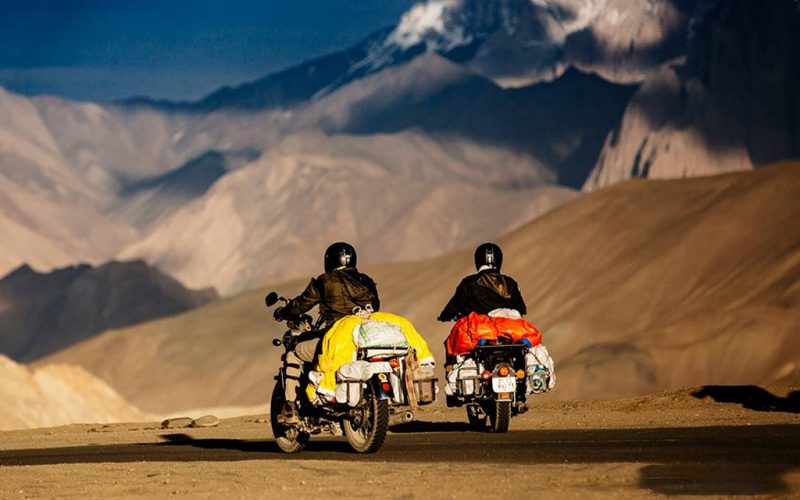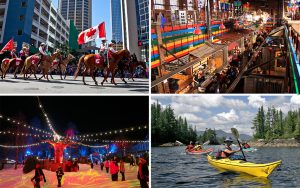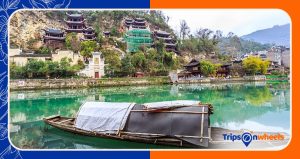Leh-Ladakh is a dreamer’s destination. The unparalleled beauty of this desert land attracts travelers across the globe throughout the year. Travelling Leh-Ladakh is not everyone’s cup of tea especially when you have breathing problems. But, tourists these days are taking the risk to enjoy this magical land where peace and tranquility are not limited to papers or web but are actually felt. If you are a risk-taker or wanderlust or a tourist who wants to unravel the mystery surrounded by Leh-Ladakh, then this post will act as your guide. Tucked between the barren mountains, Leh-Ladakh is the region testifying the abundance rather than scarcity. It is indeed a Pandora’s Box with ancient monasteries, religious sites, palaces, mountain peaks, wildlife safaris, adventure sports etc. Let’s dive into this astonishingly untouched parcel of nature.
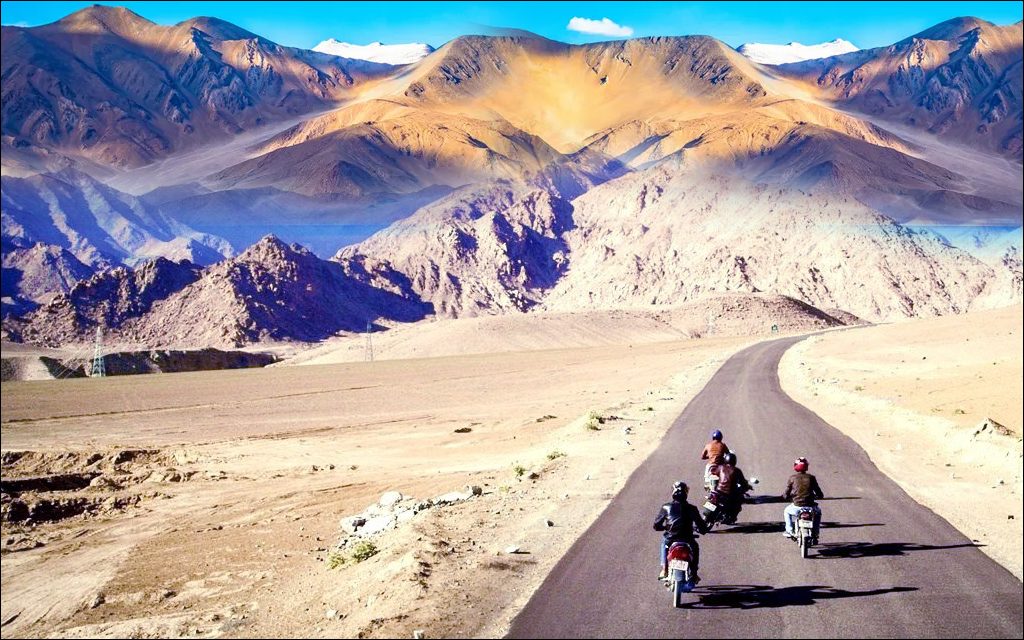
Culture and lifestyle
Leh-Ladakh is dominated by people worshipping
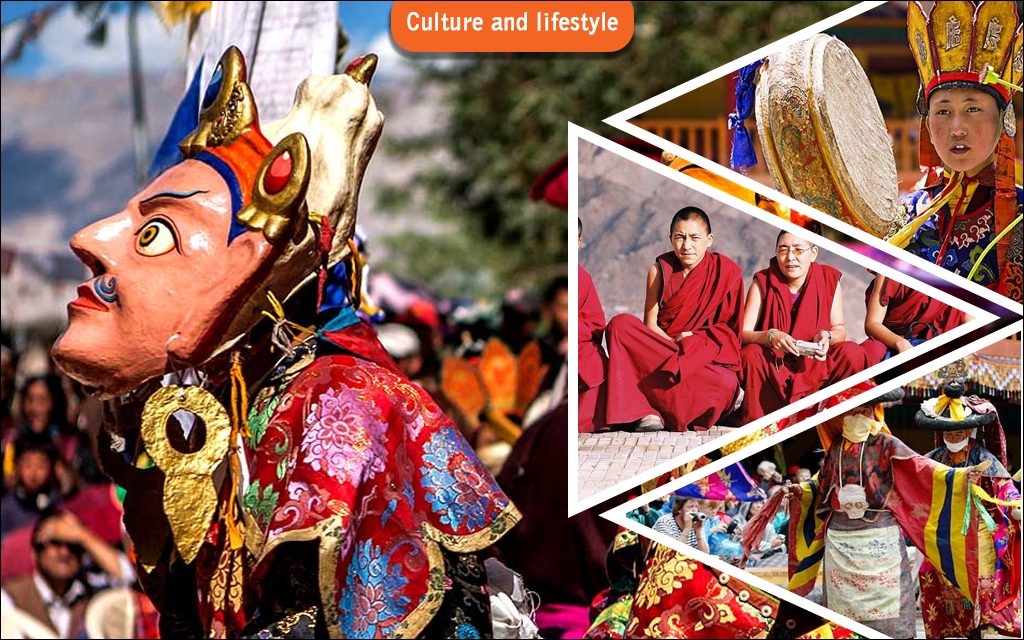
Traditional wear
- Men’s wear: Ladakhi men typically wear “Goucha” a thick woolen coat tied around the neck and a colorful sash on waist called “Skerag”.
Skerag is quite different from a belt as men carry essential things in this sash. They also wear “perak ”- a top hat with the front brim cut away over the forehead. - Women’s wear: “Kuntop” is the equivalent of “Goucha” but meant for women. Ladakhi women wear colorful shawl over kuntop. Perak is also worn by women. Perak hats in general, have three, five, seven or nine representing the rank of the wearer.
- Accessories: Ladakhi people pair their costume with woven yak
hair shoes with yak leather sole.Perek is passed onto the next generation whenever the oldest person wearingperek dies.
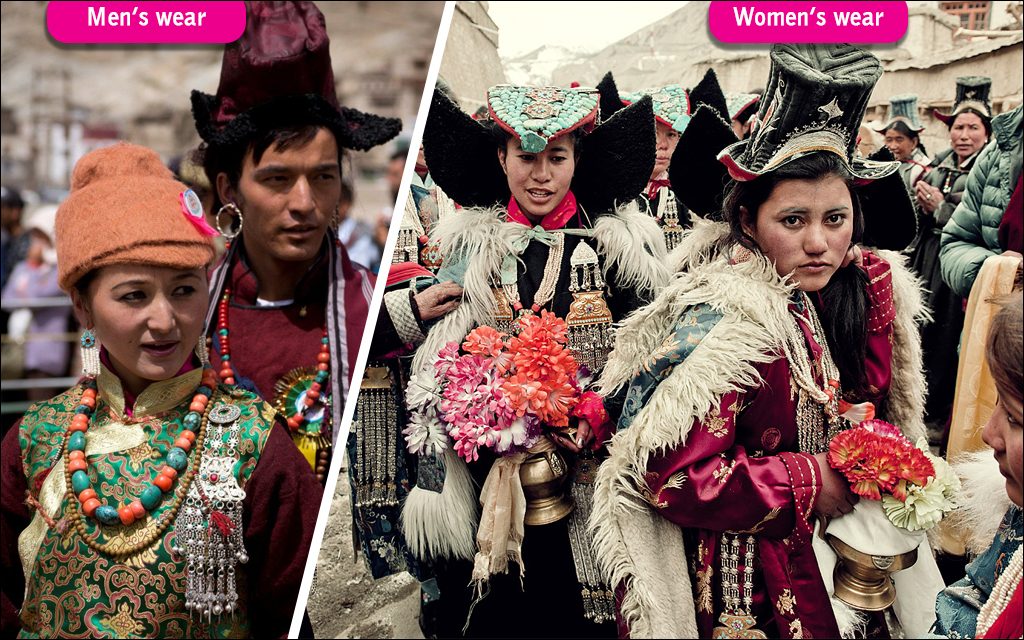
Food you must taste
You can enhance your taste buds with the scrumptious food of Leh-Ladakh. Here are some lip-smacking delicacies you must devour when on a trip to this heavenly place-
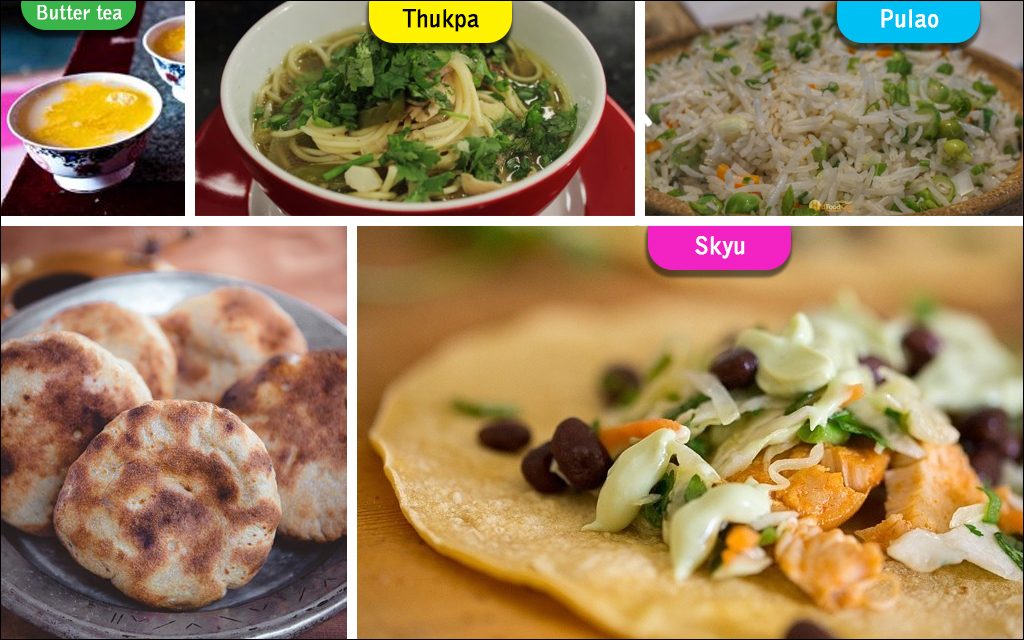
- Skyu: A soup-based staple dish, skyu is made from wheat and root vegetables and is highly nutritious. The wheat dough is rolled into pasta-like shape and then cooked with the carrots, turnip etc.
- Ladakhi Pulao: Ladkahi pulao is special in its way. With aromatic spices and chopped motton, the rice gets juicy flavor which is layered with caramelized onion and nuts giving it a unique texture.
- Thukpa: The popular dish in the region, thukpa is nothing but a noodle soup with chopped vegetables or meat and seasoned spices sprinkled on top.
- Butter tea: It is the signature brew of Ladakh made by adding butter and salt to regular tea. A typical day of Ladakhi people begin and end with this tea.
- Khambir: A side-dish to all Ladakhi brews and broths, this pan-shaped bread is made of wheat flour and baked till it gets crispy.
Festivals to attend
Festivals are a great way to know the culture, tradition and beliefs of people living in a particular region. Luckily, Leh-Ladakh is loaded with festivals that fill the atmosphere with merriment. The festivals of Ladakh testify the secluded and peaceful life of the monks. However, when they celebrate the whole region bask into the spirit of festivity.
- Hemis festival: Organized in June, this festival marks the celebration of the birth of Guru Padmasambhava who was the founder of Tantric Buddhism in Tibet. The atmosphere gets cheerful when the monks wearing colorful robes and facial masks perform their unique chamm dance representing their mission and life.
- Ladakh festival: The most vibrant festival in the entire region, Ladakh festival is organized in September. To experience the blend of cultures of northern India, Tibet and central asia, there is no other festival to attend than Ladakh festival.
- Matho nagrang festival: This event is celebrated on the 15th day of the first month of the Tibetan calendar. Matho Nagrang monastery is the only Gompa where sakya sect of tibetan Buddhism is followed. Buddhist monks dressed up as different gods and goddesses dance around. This is also a festival where two powerful oracles bestow their presence and predict the future events that will likely impact the people and land.
- Dosmoche festival: Typically held for two days, Dosmoche festival is celebrated on the 28th and 29th day of the 12th Tibetan month. It is the time when traditional offerings are made and monks perform their famous chamm dance to ward off evil and safeguard the place against any natural disaster.
- Losar festival: This festival is organized in December and is one of the most happening events of the year in the region. Intriguing dance performance, lively music, chanting of mantras, monks in colorful robes, are some of the features of this festival signifying the rich culture. It’s a festival where deities, ancestors and animals are fed delicious food so as they bless the people and land with prosperity and happiness.
- Spituk festival: Celebrated in January, Spituk festival celebrates the victory of good over evil. During this two day event, prayers are organized for peace and happiness of people. The highlight of the event is chamm dance which is performed by the monks wearing colorful costumes and accessories.
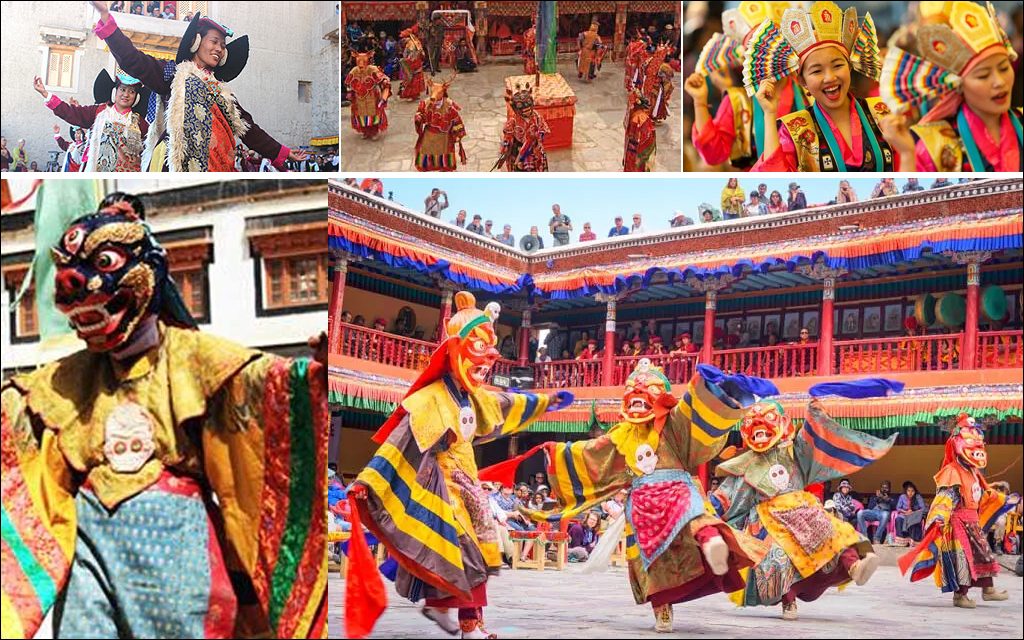
Best time to travel
Leh-Ladakh is best to be travelled in summers any time during April and June when the snow gets melted and colorful activities and festivals are happening around. However, if you wish to see snow-clad peaks and frozen lakes/rivers, then winters would be the best time to tour the place. Travelling in monsoon should be avoided as it is the time when landslides are the most common occurrence.
November to March is the coldest months when the region is cut off from the rest of the world. It is advisable not to visit the place in these months. However, if you wish to walk the famous Chadar trek, these are the ideal months for that.
Average Temperature
- April to June: Maximum- 19 degree, Minimum- 2 degree
- July to October: Maximum- 25 degree, Minimum- 20 degree
- November to March: Maximum- 7 degree, Minimum- minus 4 degree
Climate
- Summer: The region gets abundant sunlight which can cause sunburn, heatstroke and other skin related problems if precaution is not taken.
- Monsoon: One must avoid travelling Leh-Ladakh in rainy season as the region is prone to landslides during monsoon. It is quite risky to travel the treacherous slippery roads of Leh-Ladakh.
- Winters: Winters in Leh-Ladakh are quite frosty. This is the time when the region witnesses heavy snowfall and gets cut off from the rest of the world.
Travel Budget
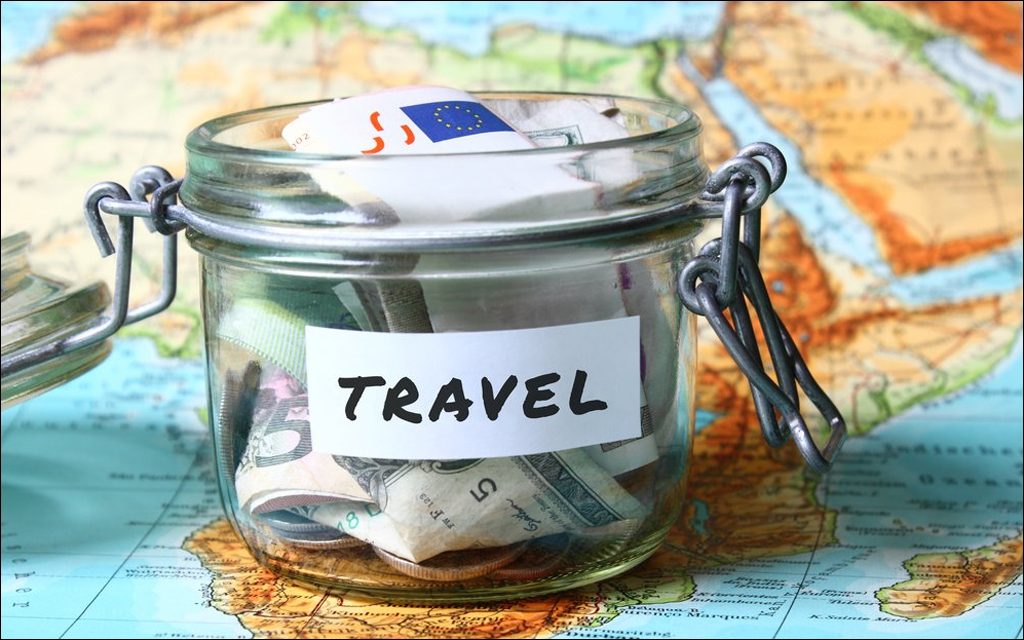
- By road: Approximately Rs. 10,000/- to Rs. 15,000/- per person (including accommodation, fuel, food and other expenditures)
- By air: Approximately Rs. 17,000/- to Rs. 25,000/- per head.
- Accommodation: Roughly between Rs. 700/- to Rs. 3000/- per night stay.Food: Affordable
Best places to visit
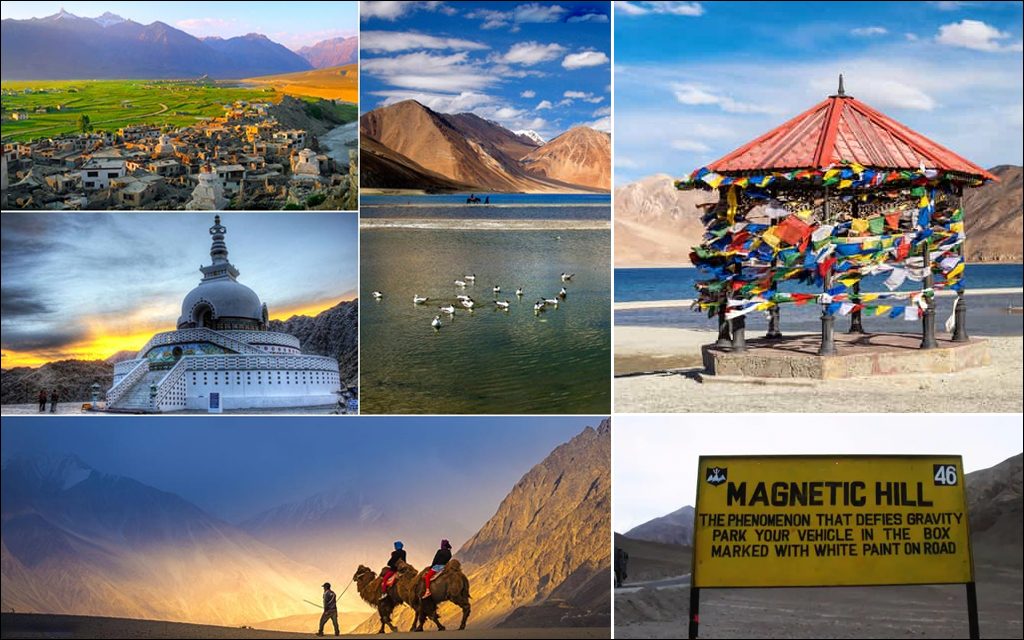
Shanti Stupa: This wonderful white dome-like structure is one of the chief landmarks of Leh-Ladakh. Witnessing sunset and sunrise here is a soul-fulfilling experience which must be enjoyed by tourists no matter what. Shanti stupa was built by Japanese Buddhist organization to celebrate 2500 years of Buddhism and promote world peace. Located nearly 5 kms away from the main city of Leh, this peace pillar is best for meditation.
Magnetic Hill: Lying at an elevation of nearly 14000 feet above sea level and 30 kms away from Leh, this gravity-defying hill is a delight to experience that must be recorded in your video camera. Many theories have been put forward to explain why vehicles appear to roll upward on the hill when parked at a particular spot. Some say it’s an optical illusion because of lack of a vertical horizon and faint backdrop. Others say it’s due to magnetic force which tends to draw objects towards it. But whatever these theories suggest, this place is successful in drawing tourists towards it.
Gurudwara Pathar Sahib: This hidden gem is one of the most mystical places to visit in Leh-Ladakh. Gurudwara Pathar sahib is devoted to founder of Sikh religion Guru Nanak Dev Ji, who bestowed his presence to this place back in 1517. The place is maintained by the Indian Army who also offers tea and cookies to the travelers who stop by the Gurudwara. The whole place has a magical charm that rejuvenates tired travelers. One must not miss the soul-satisfying langar served in form of Prasad.
The place has an interesting tale associated with it. As per the folklore, when Gurunanak ji was on his way to Punjab after touring Sikkim, Nepal and Tibet, he decided to stop over by this place. A cruel demon, who lived opposite to the hill was troubling the villagers and often scare them or eat them alive. When villages got to know about Gurunanak ji, they begged him for help. Gurunanak dev agreed to help the villagers and started delivering sermons leading to enrage the demon. The demon then threw a large rock on Gurunanak dev ji who was meditating at that time. As the rock approached the guru, it transformed into molten wax and took his shape. This infuriated the demon and he kicked the rock, to his utter surprise, his foot was imprinted on the rock just like it happened with Gurunanak ji. The demon realized his mistake and left the place, never to bother villagers or anyone ever again.
Pangong Tso Lake: This famous “3-idiots” lake needs no introduction. Ever since the movie came out, Pangong Lake is flooded by tourists round the year. You must visit the place to enjoy chilled crystal clear water surrounded by naked mountains and picturesque views. The place has an unusual charm which can be felt as soon as you step on its soil. Interestingly, Pangong Lake is also a breeding place to some of the exotic migratory birds. If you are planning to visit Leh-Ladakh during winters, make sure to attend the Ice skating festival organized here.
Hemis Monastery: Situated 45 km south of Leh, Hemis Gompa or monastery is an iconic monastery, a world heritage site and the biggest monastery in the region. The Gompa belongs to the red sect/dugpa kargyupta order of Buddhism. The place is adorned with colorful prayer flags, century-old paintings, copper-plated statue of Lord Buddha, vast courtyard and verandah which soothes one’s eyes.
Changla Pass: If you fancy high altitude and biking, then Changla pass is your ideal travel destination. The place is crowded with adventure junkies who want to get some adrenaline rush amidst the mountains. Being the 3rd highest altitude mountain pass, Changla boasts of a scenic landscape where imagination runs wild and is surrounded by captivating views making you lose yourself in nature. The pass is protected by the Indian army and is clad with snow round the year. However, since the air is quite thin here, you shouldn’t spend more than 30 minutes here otherwise get ready for breathlessness, headache, nausea and other problems. You must consult your doctor before heading to this wonderful place.
Nubra Valley: On the north of Leh, lies a valley surrounded with green oasis villages, stark slopes, and harsh arid mountains. Diskit Gompa nestled on the edge of a desert on the Shyok-side valley is one of the major attractions here. The mountains are covered with snow throughout the year giving a breathtaking view. Don’t forget to enjoy bactarian camel ride and buying authentic pashmina shawls, artifacts, dry fruits etc. Since the area around Nubra Valley is sensitive, foreign nationals and NRIs have to obtain a Protected Area Permit (PAP) to enter the valley. Indian Nationals need an Inner Line Permit for the same.
Khardungla Pass: The pass is an important gateway to Nubra, Shyok valley and not to forget siachen glacier. It is also the hotspot for adrenaline junkies who love riding a bike and explore the place on wheels. As you ride along the pass, you will observe magnificent scenic beauty, silent surroundings, and treacherous curvy roads and if lucky, you might be able to capture rare species of animals. The pass is closed with the arrival of monsoon and winters. However, this does not stop people from going there and feel on top of the world.
Leh Palace: This royal palace was built in the 17th century by King Sengge Namgyal. The nine-storied mansion has stood the test of time and is still standing in its full glory. Revealing the medieval Tibetan architecture, the building is designed in such a way that it stays warm even in the harshest winters and cold in the scorching summer heat. You can enjoy the panoramic view of the entire city from here and click a few good pictures. During Galdam Namchot festival, the palace gets brighten up and is a sight to behold.
Spituk Monastery: This 11th-century monastery gives an enchanting view of Indus river and has several old relics, artifacts, idol of lord Buddha, Thangka paintings, festive masks etc. Spituk Gompa holds an important place for Buddhist monks and history buffs in general. During the Spituk festival, the place gets a new life and you get to learn more about the customs of locals, their dance, local cuisine and much more.
Hemis High Altitude Wildlife Sanctuary: A paradise of Wildlife lovers, hemis national park house rare and exotic species of flora and fauna. Here you can easily spot snow leopard which is the main attraction of the park. Besides that, you can watch bharal (blue sheep), shapu (Ladakhi urial) and great tibetan sheep along with several endangered species like eurasian brown bear, tibetan wolf and red fox. If exotic biodiversity tempts you, then you must visit the place at least once.
Lamayuru Town: You haven’t seen Leh-Ladakh if you haven’t visited lamayuru town. There are many alluring things to do in this small town. You can visit the century-old Gompa or get a candid shot of moonland or meditate in the serene ambiance, the options are endless. The aesthetically peaceful environment of lamayuru will no doubt leave you with unforgettable memories.
Alchi Monastery: Alchi is a place where traditions meet adventures. It is home to the oldest and popular Alchi monastery – a gigantic complex with three separate temples. Proximity to the Zaskar river makes river rafting a popular adventure sports activity among travelers and tourists.
Kargil War Memorial: Kargil is a place which witnesses the influx of tourists throughout the year. Tourists come here to pay respect to Kargil war heroes who died serving the nation. The war memorial in drass sector is a sure thing to travel by if you wish to pay tribute to these heroes. Kargil war memorial is engraved with the name of brave soldiers of the Indian army who gave their lives to protect Kargil which was forcefully occupied by Pakistani troopers in 1999 leading to massive conflict between both the nations including heavy casualties. While touring Kargil, you may also check out Suru valley and the local monasteries representing Buddhism and the mystical culture.
Nimu Village: Located in the southeastern part of Ladakh, Nimu is a small quaint village where you can witness the breathtaking convergence of river Indus and Zanskar flowing quietly. It is one of the best places in Leh-Ladakh to have an enthralling river rafting experience. From here, you can take a tour to the Alchi monastery or gurudwara Pathar sahib.
Interesting facts
Here are some unbelievable and interesting facts about Leh-Ladakh which every travel should be aware of-
- The rare twin-humped camel a.k.a bactarian camel can only be seen in these parts of the country.
- Despite being a desert, Ladakh is home to a plethora of species of birds including finches, redstarts, robins and Hoopoe.
- The Indian astronomical observatory is the second highest optical telescope in the world is situated in Ladakh.
- Leh-Ladakh is the region that celebrates a maximum number of festivals as compared to other parts of the country.
- Chadar trek- trek on the frozen river Zaskar is considered one of the hardest treks in the world.
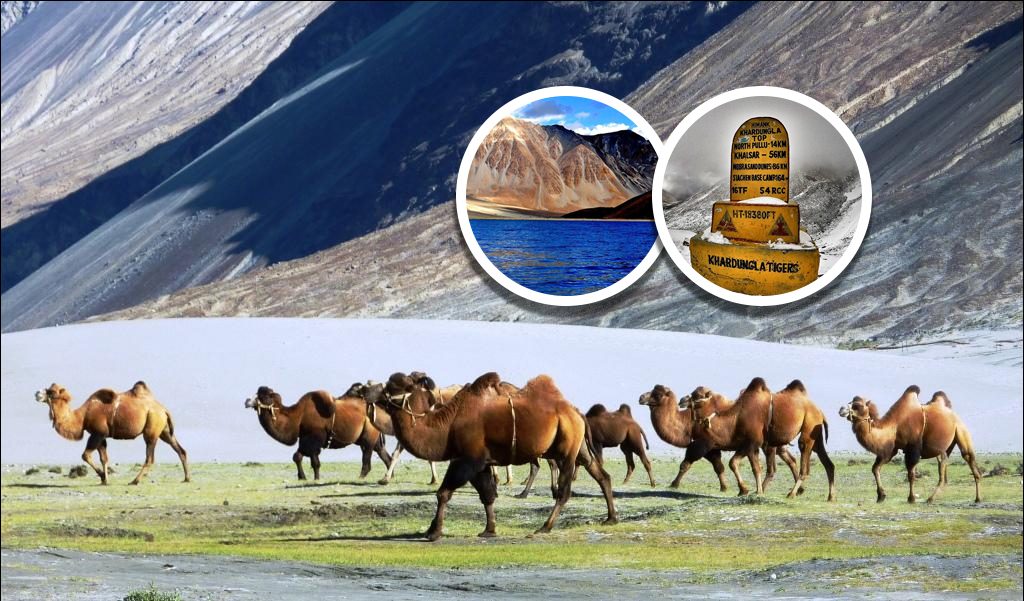
Packing essentials
Before traveling Leh-Ladakh by road or air, you must pack the essential items to prevent serious problems that are natural to occur in this high-altitude place. Here’s what you should include while packing your bag-
- Medicines for vomiting, motion sickness, headache, diarrhea, pain relief,
- Chewing gums and energy bars
- Plenty of water to stay hydrated throughout the travel
- Portable oxygen cylinder
- Digital camera or DSLR to capture best shots
- Woolen clothes
- Sunscreen lotion
- Medical kit for emergency

Dress appropriately when visiting religious places. Carry warm shawls or blazers if travelling the place in winters. For summers, pack cotton clothes or light clothes to beat the scorching heat of the region.

